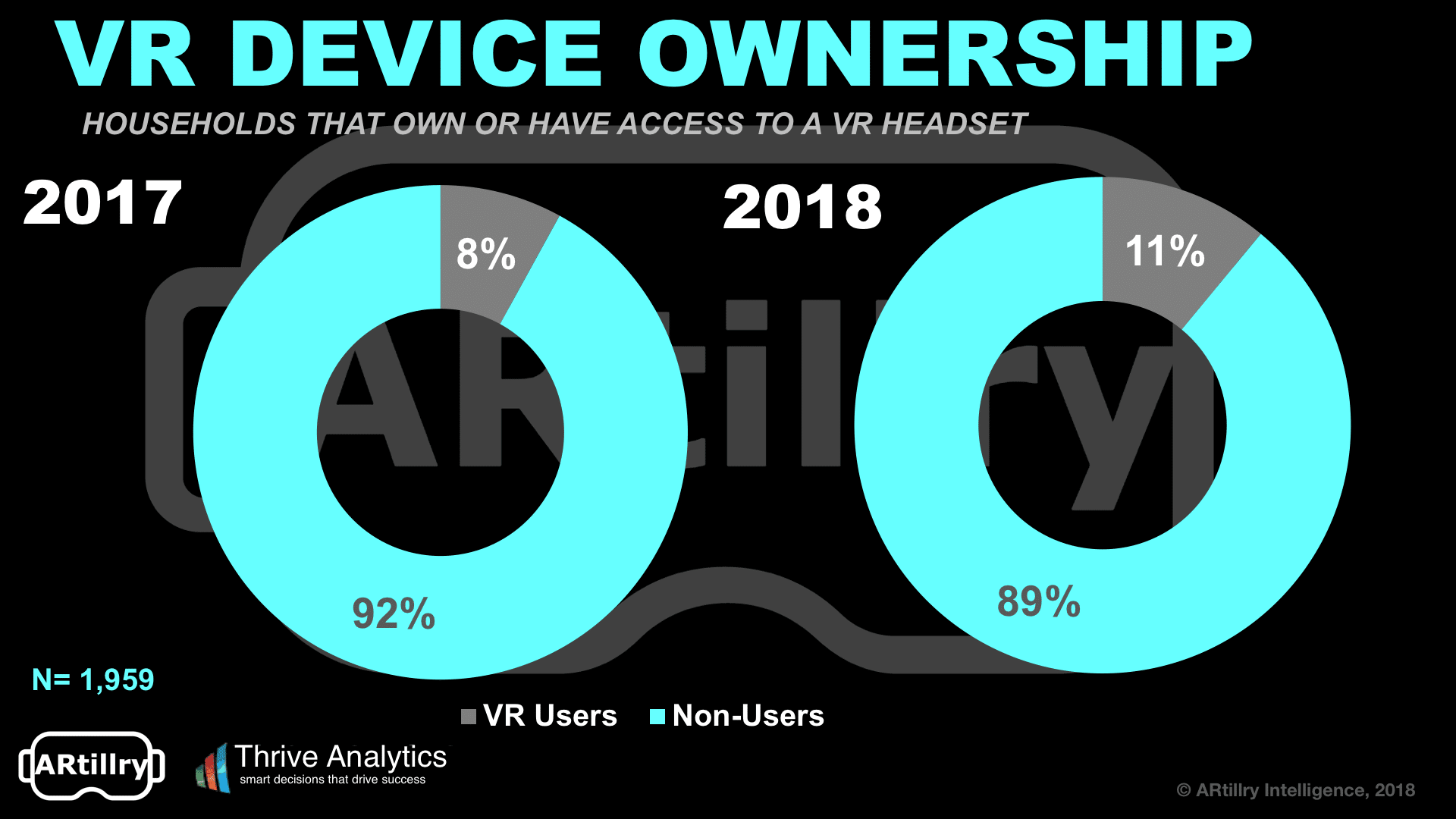
ARtillry Briefs is a video series that outlines the top trends we’re tracking, including takeaways from recent reports and market forecasts. See the most recent episode below, and past installments are here.
There are lots of questions being asked about VR adoption. Who’s using it? What are their motivations? What experiences resonate most? So we set out for answers. Working closely with Thrive Analytics, ARtillry Intelligence authored questions to be fielded through its survey engine.
The result is the Wave II of Thrive’s Virtual Reality Monitor which taps a sample of almost 2000 U.S. adults., as well as a narrative report we published to unpack the results and strategic implications. It’s also the subject of the latest episode of ARtillry Briefs (embedded below)
So what did we find out? First, eleven percent of respondents have used or own a VR headsets, which is up from 8 percent in Wave I. This should be considered essentially flat growth from Wave I, because the delta is mostly within the surveys +/- 2.5 percent margin of error.

Double-Edged Sword
Gear VR is the most penetrated headset, followed by PSVR. But GearVR is notably trending downward, which we believe is due to price reductions among tier-1 headsets and added competition this year from Windows Mixed Reality and the new batch of standalone headsets.
Other notable trending includes Rift gaining ground on Vive, which supports evidence we’ve seen elsewhere in the market. It’s also due to Oculus’ investments in content creation and its aggressive price competition that’s pursuant to a longer-term platform strategy.
Meanwhile, 65 percent of VR users reported either extreme or moderate satisfaction, which is a strong signal — few consumer products have such high satisfaction ratings. However, non-VR owners reported low levels of interest: 31 percent, which was down from 41 percent last year.
These findings together suggest that VR’s immersiveness is a double-edged sword: It produces highly visceral and satisfactory user experiences… but you have to try it first. That creates a marketing challenge, in that you can’t convey the experience in ad copy or video.
So it becomes a question of how you push that first taste to users at scale. One answer is what we call gateway drugs. They include, retail installations and VR arcades, which can work towards cultivating the next generation of VR owners with “try-before-you-buy” experiences.

The Price is Right
Another important gateway drug will be standalone VR. It checks all of the boxes for mainstream appeal in being cheaper, lighter, untethered and having more frictionless session launches. The poster child there is Oculus Go, though its launch came after these survey results were fielded.
Still, we believe future waves of this survey will report strong penetration and satisfaction for Oculus Go. It has a solid spec sheet and the price is right, again due to Oculus’ aggressive price competition. $200 is the price under which adoption inflects in these survey results (see above).
Another top survey sentiment was the importance of content. And Oculus Go has more than 1000 apps out of the gate because it’s backwards compatible with Gear VR’s library. We’ll also see the gravitational pull of developers to Oculus Go, incentivized by its growing installed base.
The high-level takeaway is that VR’s growth will be driven by continued downward pricing pressure, more content, and a few killer apps. The continued march of Moore’s law will also create faster, lighter, and more capable hardware. But mainstream adoption will be a gradual process.
You can see a lot more in the full report, and the latest ARtillry Briefs episode below.
For a deeper dive on AR & VR insights, see ARtillry’s new intelligence subscription, and sign up for the free ARtillry Weekly newsletter.
Disclosure: ARtillry has no financial stake in the companies mentioned in this post, nor received payment for its production. Disclosure and ethics policy can be seen here.
